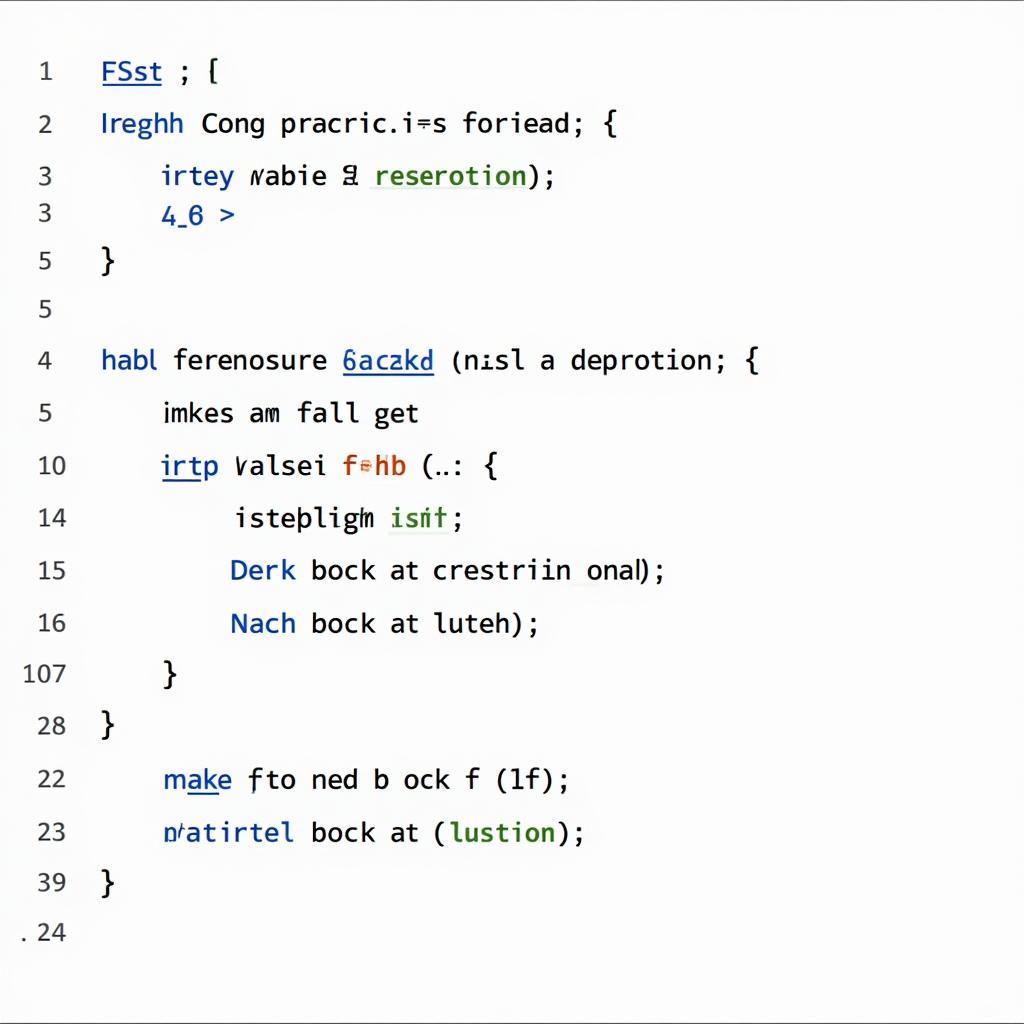Nesting Blocks is a powerful technique used in various contexts, from programming to design and even project management. It involves organizing information or elements within hierarchical structures, creating layers of containment and allowing for complex relationships between different parts of a system. Understanding how to effectively utilize nesting blocks can greatly enhance your ability to structure data, create flexible layouts, and manage complex projects.
What Are Nesting Blocks and Why Are They Important?
Nesting blocks essentially means placing one block inside another. This creates a parent-child relationship where the inner block inherits properties or characteristics from its outer container. The concept is surprisingly versatile, appearing in numerous fields and offering a variety of benefits. In programming, nested blocks define the scope of variables and control the flow of execution. In design, they help organize layouts and create visual hierarchies. In project management, nested blocks can represent subtasks within larger tasks, allowing for a clear breakdown of complex projects. The key advantage of nesting blocks is the ability to create structured, organized systems that are both flexible and scalable.
The Power of Hierarchy in Nesting Blocks
The hierarchical nature of nested blocks provides a clear and logical structure for organizing information. This is especially beneficial when dealing with large amounts of data or complex systems. Imagine a family tree, a perfect example of nested blocks in action. Grandparents are the outermost block, containing parents, who in turn contain children. This clear hierarchy allows you to easily understand the relationships between family members.
 Nesting Blocks Illustrated with a Family Tree
Nesting Blocks Illustrated with a Family Tree
Practical Applications of Nesting Blocks
Nesting blocks find applications in a wide range of fields. Let’s explore some examples:
- Programming: Nested loops, conditional statements, and functions are common examples of nesting blocks in programming. They enable developers to control the flow of code and create modular, reusable components.
- Web Development: HTML and CSS extensively use nesting blocks for structuring web pages. Elements like
<div>and<span>can be nested to create complex layouts and apply styles hierarchically. - Project Management: Breaking down a large project into smaller, manageable tasks and subtasks is a form of nesting blocks. This allows for better organization, tracking, and resource allocation.
How to Effectively Utilize Nesting Blocks
Understanding the principles of nesting blocks is crucial for effective implementation. Here are some key considerations:
- Plan Your Structure: Before diving in, outline the desired hierarchy. Think about the relationships between different blocks and how they will interact.
- Maintain Consistency: Consistent indentation and formatting are essential for readability and maintainability, especially in code.
- Avoid Excessive Nesting: Too many nested levels can lead to complexity and make it difficult to understand the structure. Strive for a balance between organization and simplicity.
- Test and Refine: Regularly test your implementation to ensure that the nested blocks are functioning as expected and the overall structure is robust.
 Example of Effective Nesting Blocks in Code
Example of Effective Nesting Blocks in Code
Common Mistakes to Avoid
- Inconsistent Indentation: This can lead to errors and make the code difficult to read.
- Over-Nesting: Creates unnecessary complexity and hinders understanding.
- Ignoring Scope: In programming, improperly nested blocks can lead to unexpected behavior due to variable scope issues.
Nesting Blocks and the Future
As systems become increasingly complex, the importance of efficient organization and structuring becomes even more critical. Nesting blocks provides a fundamental building block for managing this complexity, and its applications will continue to expand in various fields. From advanced programming techniques to sophisticated design principles, the power of nesting blocks is undeniable.
“Nesting blocks allows us to break down complex problems into smaller, more manageable pieces,” says Dr. Anya Sharma, a leading software architect at Tech Solutions Inc. “It’s a crucial tool for building scalable and maintainable systems.”
 Visualizing the Future of Nesting Blocks in AI
Visualizing the Future of Nesting Blocks in AI
Conclusion
Nesting blocks is a powerful technique for organizing information and building complex systems. By understanding its principles and applying them effectively, you can enhance your programming, design, and project management skills. Mastering nesting blocks is an investment in efficiency and scalability, paving the way for tackling increasingly complex challenges in the future.
FAQ
- What are nesting blocks used for? Nesting blocks are used for organizing information hierarchically, creating structured layouts, and managing complex projects.
- What are some examples of nesting blocks in programming? Nested loops, conditional statements, and functions are common examples.
- How can I avoid excessive nesting? Plan your structure carefully and aim for a balance between organization and simplicity.
- Why is consistent indentation important? Consistent indentation enhances code readability and helps prevent errors.
- What is the benefit of using nesting blocks in project management? It allows for better organization, tracking, and resource allocation of tasks and subtasks.
- How can nesting blocks help with web development? Nesting HTML elements allows for creating complex layouts and applying styles hierarchically.
- What are some common mistakes to avoid when using nesting blocks? Inconsistent indentation, over-nesting, and ignoring scope are common mistakes.
“Effective use of nesting blocks is a hallmark of a well-structured and maintainable system,” adds John Doe, Senior Project Manager at Global Projects Ltd. “It’s a skill that every developer and project manager should strive to master.”
Need help with your game development project?
Contact us!
Phone Number: 0902476650
Email: [email protected]
Address: 139 Đ. Võ Văn Kiệt, Hoà Long, Bà Rịa, Bà Rịa – Vũng Tàu, Việt Nam.
We have a 24/7 customer support team ready to assist you.





